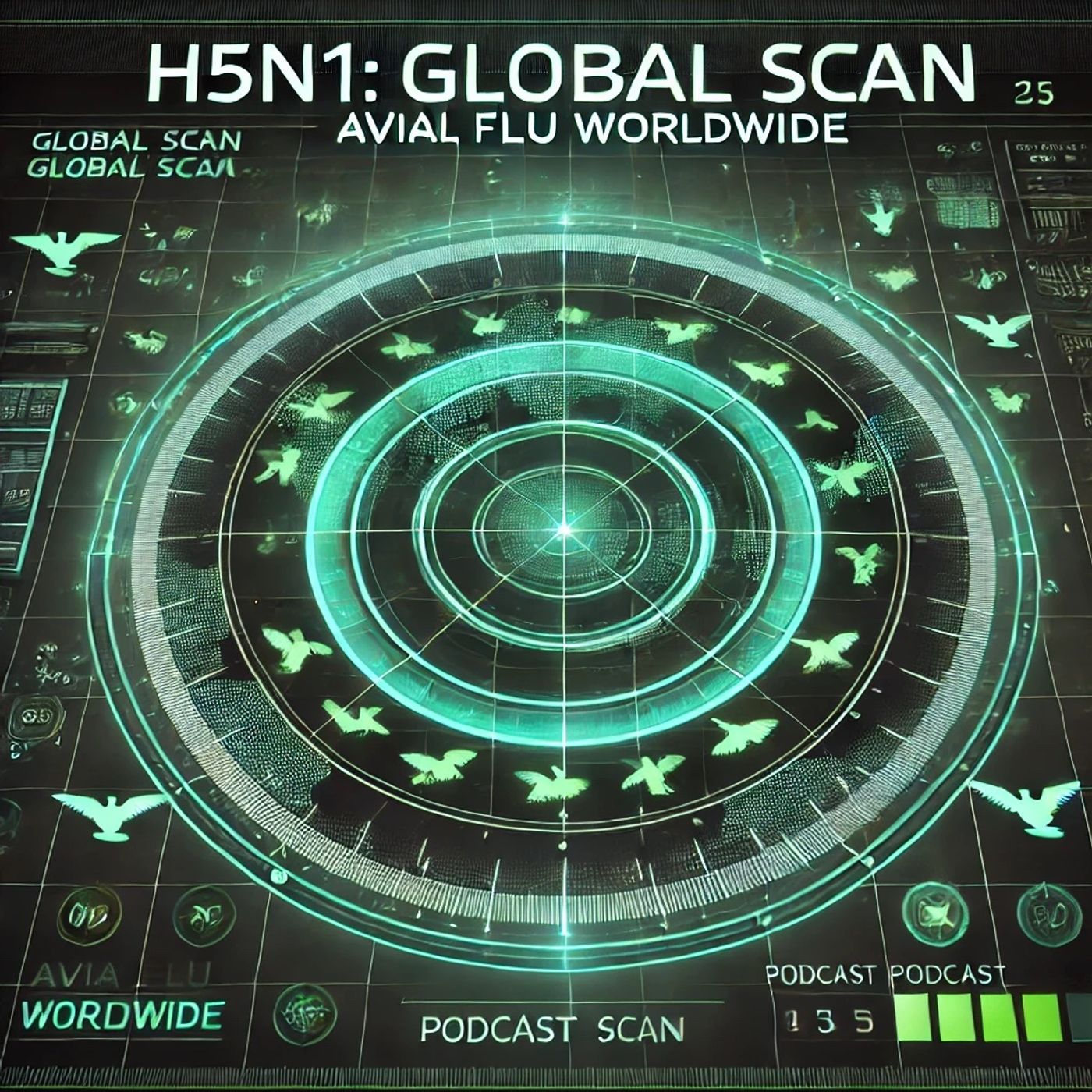Podcast Episode Details
Back to Podcast Episodes
H5N1 Avian Flu Spreads Globally: 26 Human Cases, 11 Deaths Reported in 2025 Amid Heightened Health Concerns
This is H5N1 Global Scan: Avian Flu Worldwide, bringing you a concise international look at the avian flu crisis as it stands today.
Avian influenza H5N1, first detected in wild birds in Southeast Asia in the early 2000s, has escalated to a global threat touching every continent except Australia by 2025. According to the CDC, between January and August this year alone, 26 human infections were detected worldwide, resulting in 11 deaths, mostly among people with direct contact with poultry. Cambodia recorded the highest toll, with fatal cases also reported in India and Mexico.
Let’s break it down by region. In Asia, Cambodia’s recent surge—with seven human cases in a single month and a high fatality ratio—highlights the risk still faced by rural agricultural communities. India continues to battle outbreaks in both poultry and wildlife, prompting regional health checks and rapid containment campaigns. Europe has seen sporadic outbreaks in poultry and, notably, spillover into mammals such as sheep and dairy cows, increasing surveillance and laboratory testing. Africa’s poultry sector experienced further losses, with culling measures heavily impacting local economies.
The Americas, as detailed by the Pan American Health Organization, have recorded numerous animal outbreaks and a handful of human cases this year, especially in the US and Mexico. Early 2025 was marked by large-scale culling of chickens in the southern US, causing temporary food supply disruptions and job losses. South America, especially Peru, has reported backyard poultry clusters, reflecting ongoing cross-border transmission concerns.
Global trade has not escaped H5N1’s reach. The World Organization for Animal Health says poultry export restrictions remain widespread, resulting in significant economic fallout, especially for low- and middle-income countries reliant on poultry exports. Farming communities worldwide face not just livestock loss but abrupt unemployment due to culling and border closures.
The World Health Organization maintains that, although the current public health risk is low for the general population, high vigilance is vital as the virus continues to circulate in birds, mammals, and occasionally humans. WHO and FAO lead global risk assessments, emphasizing coordinated surveillance, rapid diagnostics, and open data sharing between countries. Their joint vaccine research collaborations have sped up next-generation vaccine candidates, but despite promising trial results, no globally available universal avian influenza vaccine is on the market yet.
Containment measures differ: Europe and Japan favor rapid culling and strict biosecurity; the US deploys enhanced farm-level surveillance and variable movement controls; some Asian and African nations focus on community awareness due to limited resources.
Researchers are also tracking the virus’s increasing ability to infect mammals, fueling calls for expanded “One Health” approaches—uniting animal, human, and environmental health disciplines. International experts warn that if H5N1 begins efficient person-to-person spread, the pandemic potential increases sharply, mounting pressure for even tighter cross-border coordination.
Thanks for tuning in to H5N1 Global Scan: Avian Flu Worldwide. Join us next week for more updates on global health. This has been a Quiet Please production. For me, check out Quiet Please Dot AI.
For more http://www.quietplease.ai
Get the best deals https://amzn.to/3ODvOta
Published on 1 week ago